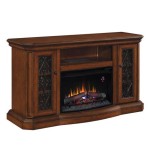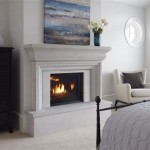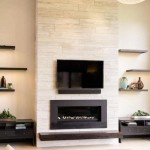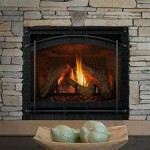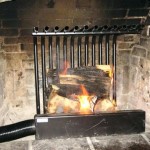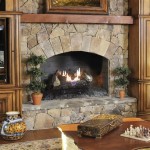Fireplace Inserts and Accessories: Enhancing Efficiency and Aesthetics
Fireplace inserts and accessories represent a significant category within home heating and design, offering homeowners a way to improve the efficiency of existing fireplaces while also enhancing their aesthetic appeal. Unlike traditional open fireplaces, inserts are designed to fit directly into an existing firebox, providing a controlled combustion environment that maximizes heat output and minimizes energy waste. A wide range of accessories complements these inserts, further customizing the fireplace’s functionality and appearance.
This article will explore the different types of fireplace inserts, key considerations when selecting an insert, and the array of accessories available to personalize and optimize the fireplace experience. Understanding these aspects is crucial for homeowners seeking to upgrade their existing fireplaces and achieve a balance of warmth, efficiency, and visual appeal.
Types of Fireplace Inserts: Fuel Options and Operational Characteristics
Fireplace inserts are categorized primarily by the type of fuel they utilize. The most common types include wood, gas, and electric inserts, each offering distinct advantages and disadvantages in terms of heat output, fuel cost, environmental impact, and maintenance requirements.
Wood Inserts: Wood-burning inserts are popular for their authentic ambiance and high heat output. They typically consist of a sealed firebox constructed of cast iron or steel, surrounded by a decorative facade. These inserts burn wood more efficiently than traditional open fireplaces, significantly reducing smoke emissions and creosote buildup. Advanced combustion technologies, such as catalytic converters and secondary air injection systems, are often incorporated to further improve efficiency and reduce particulate matter released into the atmosphere. The heat generated by wood inserts can effectively warm a large living space, making them a viable alternative to central heating in many homes.
However, wood-burning inserts require a dedicated wood supply and regular maintenance, including ash removal and chimney cleaning. The installation process can also be more complex, as it often necessitates the installation of a stainless-steel chimney liner to ensure proper venting and safety. Fuel costs vary, depending on the availability and price of firewood in a particular region.
Gas Inserts: Gas fireplace inserts offer convenience and ease of use, operating on either natural gas or propane. These inserts are designed to provide instant heat with the simple flick of a switch or the push of a button. Many models are equipped with programmable thermostats and remote controls, allowing for precise temperature regulation and convenient operation. Gas inserts are available in a wide range of styles, from traditional log sets to contemporary glass media, providing homeowners with numerous options to match their existing decor.
Gas inserts typically require professional installation, including the connection to a gas line and the venting of exhaust gases. While installation costs can be higher than those associated with wood inserts, gas inserts generally require less maintenance. The ongoing fuel costs depend on local gas prices, but they are often more predictable and stable than firewood prices. Gas inserts are also generally cleaner burning than wood inserts, producing fewer emissions and less particulate matter.
Electric Inserts: Electric fireplace inserts are the simplest and most versatile option. They do not require a chimney or venting system, making them suitable for virtually any room in the house. Electric inserts operate by converting electrical energy into heat, using heating coils or infrared technology. They often feature realistic flame effects, simulated log sets, and adjustable heat settings. The visual appeal of electric inserts has improved significantly in recent years, with many models offering lifelike flames and customizable lighting options.
Electric inserts are relatively inexpensive to purchase and install, and they require minimal maintenance. They offer the convenience of instant heat at the touch of a button, and they can be used year-round with the heat function turned off. While electric inserts are not as efficient as wood or gas inserts in terms of heat output, they are an excellent option for supplemental heating and creating a cozy atmosphere. The operating costs depend on local electricity rates, but they are typically lower than those associated with gas or wood inserts.
Key Considerations When Selecting a Fireplace Insert
Choosing the right fireplace insert involves careful consideration of several factors, including the size of the space to be heated, the existing fireplace dimensions, fuel availability, budget, and aesthetic preferences. A thorough evaluation of these factors will ensure that the selected insert meets the homeowner’s specific needs and expectations.
Size and Heat Output: The size of the space to be heated is a crucial factor in determining the appropriate heat output of the fireplace insert. Heat output is typically measured in British thermal units (BTUs). A larger space will require a higher BTU rating to effectively maintain a comfortable temperature. Overestimating the BTU rating can result in an overheated space, while underestimating it may lead to insufficient heating. It is essential to accurately measure the dimensions of the room and consider factors such as insulation levels, window area, and ceiling height when calculating the required BTU output.
The dimensions of the existing fireplace firebox also play a critical role in the selection process. The insert must be sized to fit properly within the firebox, with adequate clearance for installation and proper venting. It is essential to consult the manufacturer’s specifications and installation guidelines to ensure compatibility. Professional installation is often recommended to ensure proper fit and functionality.
Fuel Availability and Costs: The availability and cost of fuel are important considerations, particularly for wood and gas inserts. Wood inserts require a reliable source of firewood, which can be purchased or harvested. The cost of firewood varies depending on the region and the type of wood. Gas inserts require a connection to a natural gas or propane line, and the cost of gas depends on local utility rates. Electric inserts require access to an electrical outlet, and the cost of electricity depends on local rates and usage patterns. Homeowners should carefully evaluate the long-term fuel costs associated with each type of insert before making a decision.
Efficiency and Environmental Impact: Fireplace inserts offer significantly improved efficiency compared to traditional open fireplaces, but the level of efficiency varies depending on the type and model. Wood inserts are typically more efficient than open fireplaces, but they can still produce emissions and particulate matter. Gas inserts are generally cleaner burning than wood inserts, producing fewer emissions. Electric inserts are the most environmentally friendly option, as they do not produce any emissions at the point of use. Homeowners who are concerned about environmental impact should consider selecting a high-efficiency gas or electric insert.
Aesthetic Preferences and Design: Fireplace inserts are available in a wide range of styles and designs to complement any home decor. Wood inserts typically feature a traditional aesthetic, with realistic log sets and cast-iron or steel facades. Gas inserts offer a broader range of styles, from traditional log sets to contemporary glass media and linear designs. Electric inserts also offer a variety of styles, with customizable flame effects and lighting options. Homeowners should carefully consider their aesthetic preferences and select an insert that complements their existing decor and architectural style.
Fireplace Accessories: Enhancing Functionality and Appearance
A comprehensive array of accessories is available to enhance the functionality and appearance of fireplace inserts. These accessories range from practical items that improve efficiency and safety to decorative elements that add style and personality.
Mantels and Surrounds: Mantels and surrounds are decorative elements that frame the fireplace insert, adding visual interest and creating a focal point in the room. Mantels are typically constructed of wood, stone, or metal, and they provide a shelf for displaying decorative items. Surrounds are decorative panels that surround the firebox, concealing the edges of the insert and creating a seamless transition. Mantels and surrounds are available in a wide range of styles, from traditional to contemporary, allowing homeowners to customize the look of their fireplace.
Hearth Pads: Hearth pads are non-combustible surfaces that extend beyond the firebox opening, protecting the surrounding floor from sparks and embers. Hearth pads are typically constructed of tile, stone, or metal, and they are required for wood-burning inserts to meet safety standards. They are available in a variety of shapes, sizes, and styles to complement any decor.
Tool Sets: Fireplace tool sets include essential tools for managing a wood-burning fire, such as a poker, shovel, tongs, and brush. These tools are typically made of durable metal and are designed to withstand the high temperatures of a fireplace. Tool sets are available in a variety of styles and finishes to complement the fireplace decor.
Log Holders: Log holders provide a convenient and organized way to store firewood near the fireplace. Log holders are available in a variety of styles and materials, from simple metal racks to decorative wood bins. They help to keep firewood dry and accessible, making it easier to maintain a fire.
Decorative Media: For gas and electric inserts, decorative media such as glass beads, ceramic logs, or river stones can be used to enhance the visual appeal of the fire. These media are designed to withstand high temperatures and create a realistic or contemporary look. They are available in a wide range of colors and textures, allowing homeowners to customize the appearance of their fireplace.
Remote Controls and Thermostats: Remote controls and thermostats offer convenient control over the fireplace insert, allowing homeowners to adjust the flame height, heat output, and temperature from a distance. These accessories are particularly useful for gas and electric inserts, providing precise control and energy savings.
Chimney Liners and Venting Systems: For wood and gas inserts, proper chimney liners and venting systems are essential for safety and efficiency. Chimney liners are typically made of stainless steel and are designed to protect the existing chimney from corrosion and creosote buildup. Venting systems are designed to safely exhaust combustion gases to the outside. Professional installation of chimney liners and venting systems is crucial to ensure proper functionality and prevent carbon monoxide poisoning.

Fireplace Insert Guide Fireplaces Direct Learning Center

Ventis Hei240 Wood Burning Insert Rockford Chimney

Fireplace Accessories Electric Fireplaces Direct

Best Fireplace Inserts In 2024

Fireplace Inserts Accessories By Tri County Hearth

Belmont Small Gas Insert

Fireplace Accessories Pittsfield Ma Northeastern

Wood Fireplaces Inserts Bowmans Stove Patio

35 Ruby Contemporary Intellifire Touch Direct Vent Fireplace Insert Blower And Remote Electronic Ignition Majestic

Enviro E Series Gas Or Propane Insert Fireplace Fireplaces By Cameron

